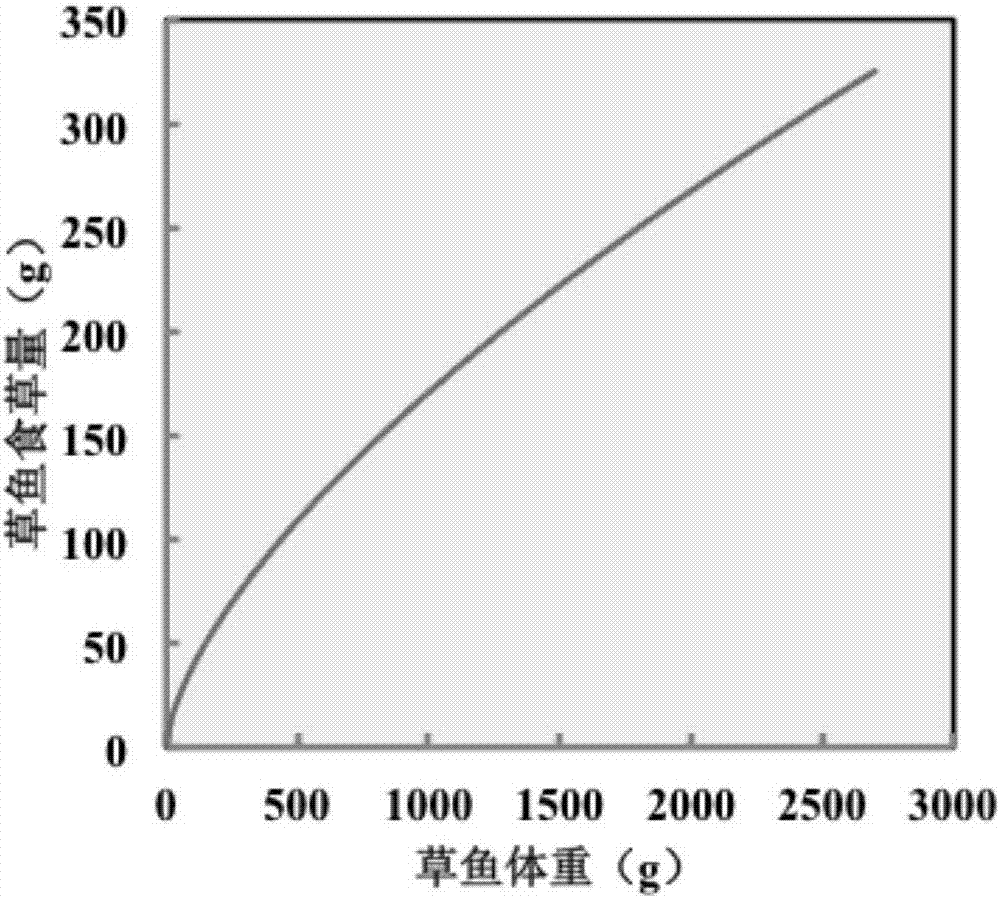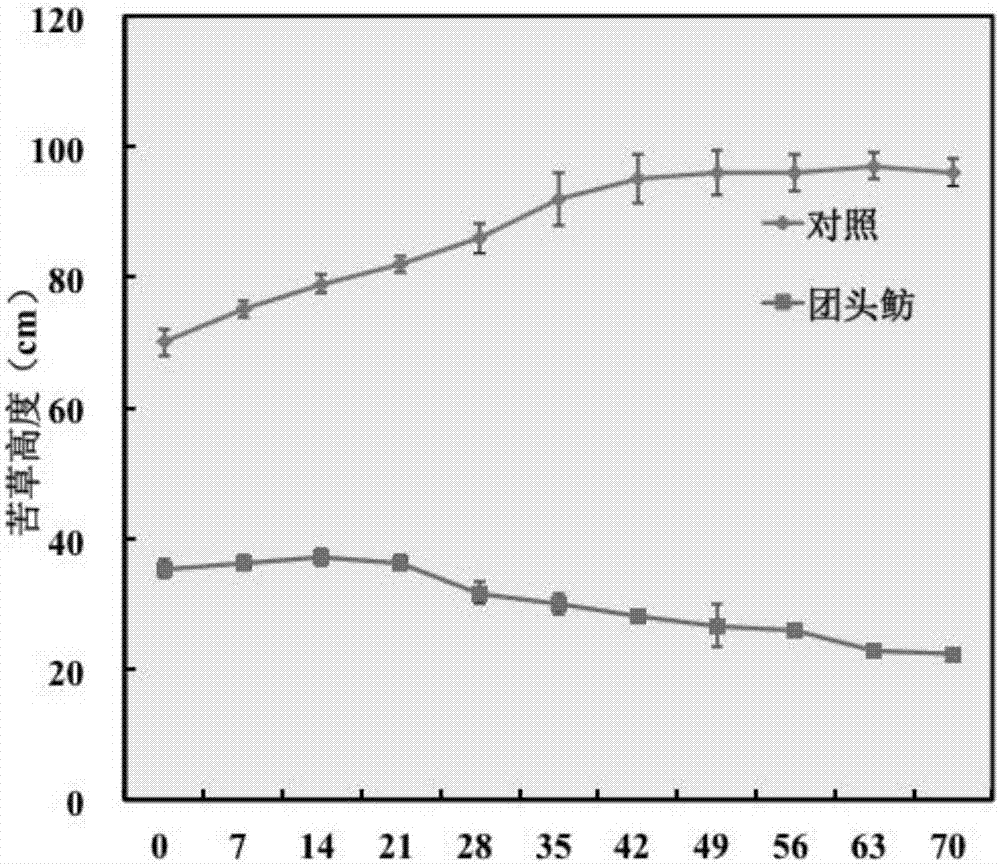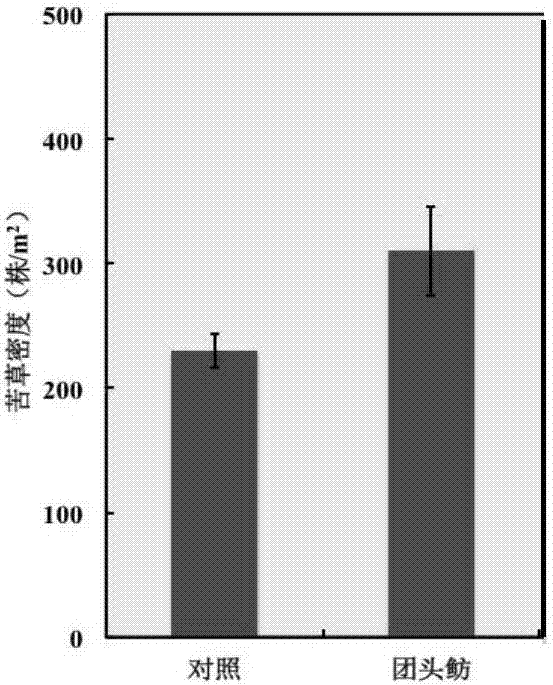Comprehensive technical scheme for regulating submerged plant communities by utilizing herbivorous fish
A technology of submerged plants and technical solutions, applied in the field of ecological restoration of water bodies, can solve problems such as insufficient fish stocking amount, no proportion and interval planting, and unreasonable stocking timing, so as to reduce management costs and increase economic income.
- Summary
- Abstract
- Description
- Claims
- Application Information
AI Technical Summary
Problems solved by technology
Method used
Image
Examples
Embodiment 1
[0030] Algae-type lakes have turbid water and low transparency. Although exogenous pollution has been cut off and endogenous pollution has been controlled, it is still difficult for submerged plants to recover. For algae-type eutrophic lakes that have cut off exogenous pollution and controlled endogenous pollution, implement the following steps:
[0031]In Yanglan Lake, Ezhou, Hubei, selected the canopy-type pioneer submerged plants Hydra verticillium and hornwort, and the meadow-type submerged submerged plant C. The ratio of planting area of submerged plants for building groups is 1:2. In May 2015, pioneer submerged plants and submerged plants for building groups were planted at intervals of 2 meters, with a total planting area of 3000m 2 , the planting density is 600g / m 2 , the average water depth is 1.5 meters, and the initial transparency is 60cm;
[0032] When the transparency reaches an average of 1.2 meters (when the ratio of water depth reaches 0.8), after invest...
Embodiment 2
[0040] In shallow lakes with eutrophication, we choose Trichosanthes spicaculata and Pleurotus spp. as the pioneer submerged plants, and Erythrina chinensis and S. microdentata as submerged plants for building groups. According to the planting area of pioneer plants and building groups The proportion is 1:1. In May 2010, pioneer plants and colony plants were planted at intervals of 1 meter, and the area was separated from other submerged plant areas with fences. The average water depth of the restoration area was 1.4 meters, and the initial transparency 0.7 meters, submerged plants planting density 500g / m 2 .
[0041] When the transparency reached an average of 1.2 meters, the survey found that the biomass density of canopy-type pioneer submerged plants was 3800g / m 2 , distribution area 2000m 2 ; At this time, the average height of the meadow-type submerged plants in the whole restoration area is 70cm;
[0042] According to the highly consistent control principle of pione...
Embodiment 3
[0051] 600m in a community in Shanghai 2 In the river channel, we chose Trichophyllum versicolor and Hornwort as the pioneer submerged plants, and Erythrina miltiorrhiza and Ranunculus as the submerged plants for building groups. According to the ratio of the planting area of pioneer plants and building groups of 1:1.5, in 2014 In June 2019, pioneer plants and colony plants were planted at intervals of 2 meters. The average water depth in this area was 1 meter, the initial transparency was 50 cm, and the planting density of submerged plants was 800 g / m 2 .
[0052] When the transparency reached an average of 80cm, the survey found that the biomass density of canopy-type pioneer submerged plants was 3800g / m 2 ; At this time, the average height of the meadow-type submerged plants in the whole restoration area is 80cm;
[0053] According to the highly consistent control principle of pioneer submerged plants and meadow-type submerged plants, the biomass of pioneer submerged pl...
PUM
| Property | Measurement | Unit |
|---|---|---|
| transparency | aaaaa | aaaaa |
Abstract
Description
Claims
Application Information
 Login to View More
Login to View More - R&D
- Intellectual Property
- Life Sciences
- Materials
- Tech Scout
- Unparalleled Data Quality
- Higher Quality Content
- 60% Fewer Hallucinations
Browse by: Latest US Patents, China's latest patents, Technical Efficacy Thesaurus, Application Domain, Technology Topic, Popular Technical Reports.
© 2025 PatSnap. All rights reserved.Legal|Privacy policy|Modern Slavery Act Transparency Statement|Sitemap|About US| Contact US: help@patsnap.com



